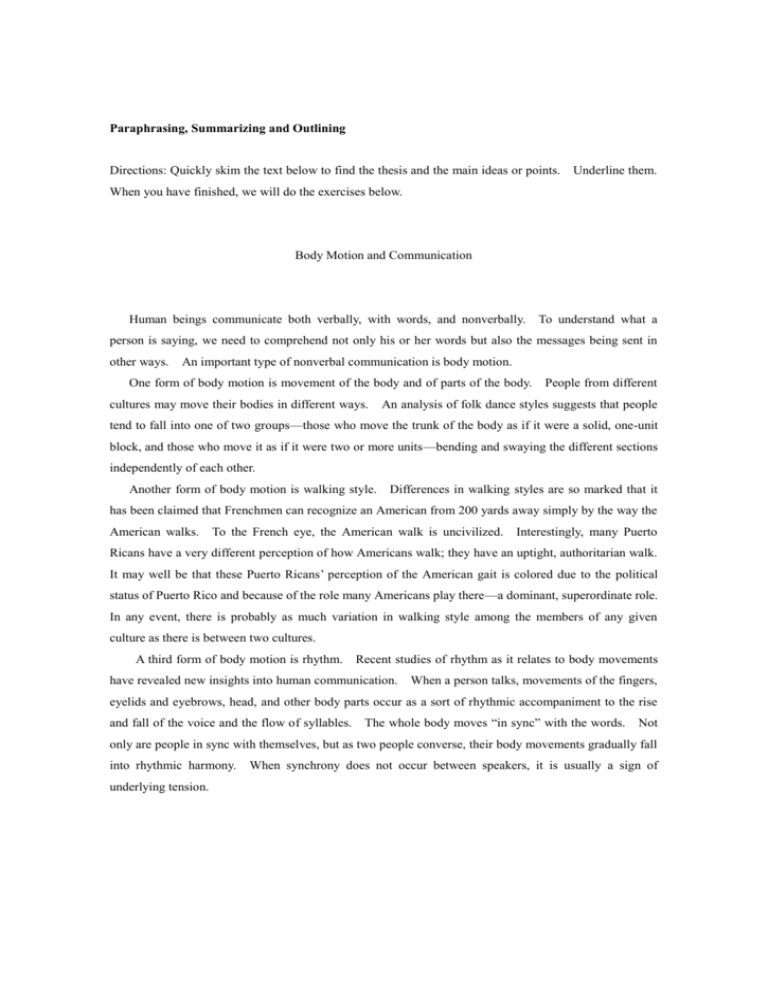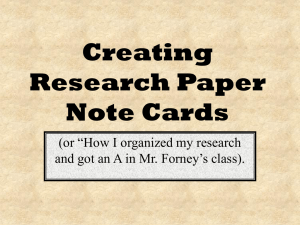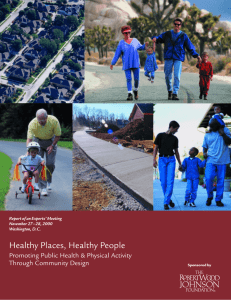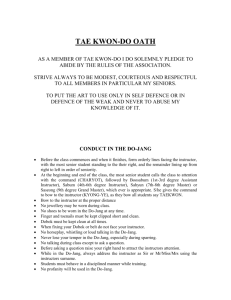Paraphrasing, Summarizing and Outlining
advertisement

Paraphrasing, Summarizing and Outlining Directions: Quickly skim the text below to find the thesis and the main ideas or points. Underline them. When you have finished, we will do the exercises below. Body Motion and Communication Human beings communicate both verbally, with words, and nonverbally. To understand what a person is saying, we need to comprehend not only his or her words but also the messages being sent in other ways. An important type of nonverbal communication is body motion. One form of body motion is movement of the body and of parts of the body. cultures may move their bodies in different ways. People from different An analysis of folk dance styles suggests that people tend to fall into one of two groups—those who move the trunk of the body as if it were a solid, one-unit block, and those who move it as if it were two or more units—bending and swaying the different sections independently of each other. Another form of body motion is walking style. Differences in walking styles are so marked that it has been claimed that Frenchmen can recognize an American from 200 yards away simply by the way the American walks. To the French eye, the American walk is uncivilized. Interestingly, many Puerto Ricans have a very different perception of how Americans walk; they have an uptight, authoritarian walk. It may well be that these Puerto Ricans’ perception of the American gait is colored due to the political status of Puerto Rico and because of the role many Americans play there—a dominant, superordinate role. In any event, there is probably as much variation in walking style among the members of any given culture as there is between two cultures. A third form of body motion is rhythm. Recent studies of rhythm as it relates to body movements have revealed new insights into human communication. When a person talks, movements of the fingers, eyelids and eyebrows, head, and other body parts occur as a sort of rhythmic accompaniment to the rise and fall of the voice and the flow of syllables. The whole body moves “in sync” with the words. Not only are people in sync with themselves, but as two people converse, their body movements gradually fall into rhythmic harmony. underlying tension. When synchrony does not occur between speakers, it is usually a sign of 1. Copy the thesis: List the main points (do not write complete sentences): • • • 2. Paraphrase the thesis: • • • 3. Paraphrase the first sentences of the last three paragraphs: • • • 4. Write a summary of the whole text in four sentences: 5. Write a one-sentence summary of the text: 6. Complete the outline; be sure to use parallel structures: Body Motion and Communication Thesis: I. Movements of the body and body parts A. One-unit cultures B. II. Walking styles A. Culturally based interpretations of American walking style 1. 2. B. III. A. Synchrony of sound and body B. 1. Harmony 2.








